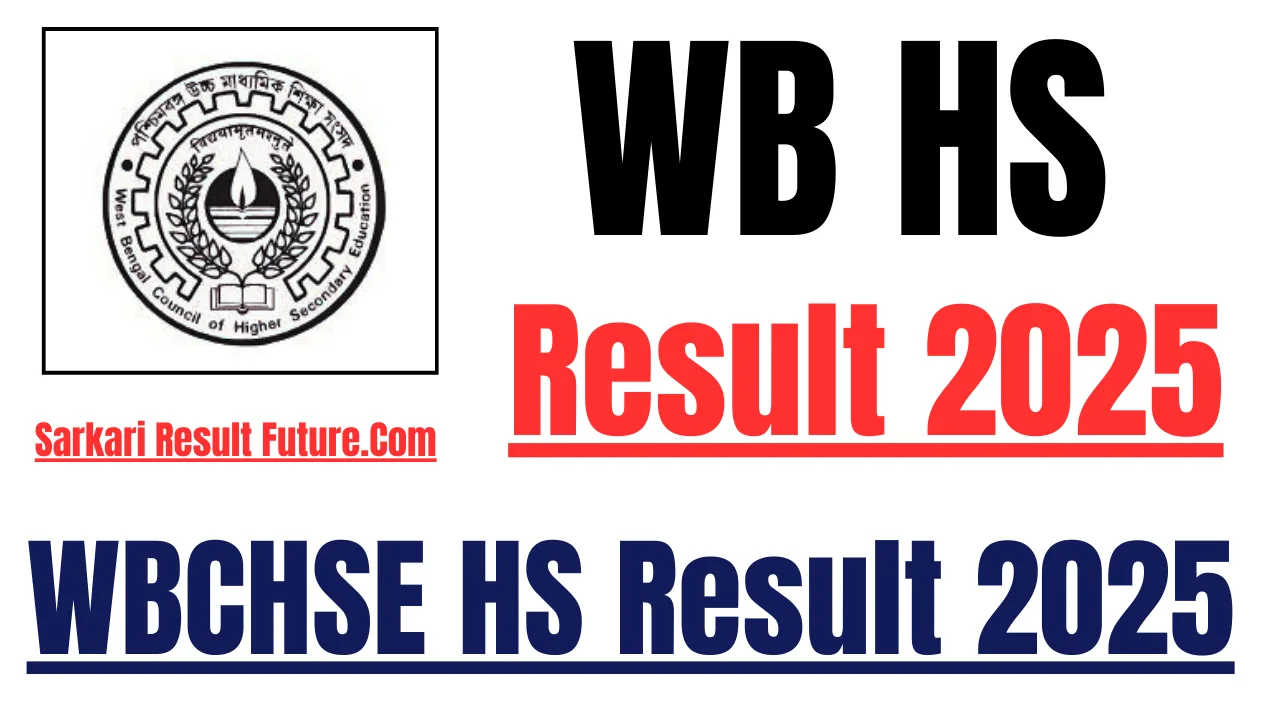
The long wait for lakhs of students in West Bengal has finally come to an end as the West Bengal Council of Higher Secondary Education (WBCHSE) declared the Class 12 results for 2025 today, marking a pivotal moment in the academic journey of students across the state. Held amid immense expectations and preparations, the Higher Secondary Examination, popularly known as the HS exam, has once again showcased the resilience, dedication, and academic commitment of the youth in one of India’s most culturally vibrant states.
Declaration of the West Bengal Class 12 Result 2025
In keeping with its annual academic calendar, WBCHSE officially released the HS 2025 results on May 7, 2025, at 2:00 PM. The results became accessible to students through multiple digital platforms, giving them the convenience to check their performance from anywhere. The official announcement was made at a press briefing by WBCHSE authorities, followed by the digital release of the results online.
This year’s results were made available on the official websites: wbresults.nic.in and wbchse.wb.gov.in, both of which handled an enormous amount of traffic as students and parents logged in to view their marks. Alongside online access, the board also facilitated results via SMS services, ensuring that students from rural or less connected areas could also receive their results without hassle.
The announcement wasn’t just a routine exercise. It represented a turning point, a threshold moment for students standing at the crossroads of higher education and future aspirations. With this outcome, new doors have opened — not just in colleges and universities, but in students’ imagination of what they could achieve.
Examinations Conducted Across the State: A Look Back
The Class 12 examinations in West Bengal were conducted between March 3 and March 18, 2025, spanning over two crucial weeks that tested not just academic learning but time management, mental preparedness, and focus. A total of 4,73,919 students registered for the examination this year, making it one of the largest academic undertakings in the country. With over 2,000 examination centres set up across the state, WBCHSE ensured equitable and seamless conduct of exams, reinforcing the efficiency of its logistical apparatus.
A significant part of the HS examination process includes the distribution of question papers, maintenance of examination decorum, adherence to safety protocols, and a highly streamlined invigilation process. This year’s exam period was conducted without any major controversies or reported instances of mass cheating or malpractices, reflecting the board’s growing commitment to transparency and discipline.
Students came from all parts of West Bengal — from the densely packed lanes of Kolkata to the serene farmlands of Jalpaiguri, and from the industrial outskirts of Durgapur to the coastal stretches of East Midnapore. These examinees represented not just varied geographic backgrounds, but different socio-economic realities, united in their pursuit of academic success.
Result Highlights: A Pass Percentage That Reflects Resilience
The board reported that 4,30,286 students cleared the Higher Secondary Examination in 2025, resulting in a pass percentage of 90.79%. This figure represents a modest yet commendable improvement from the previous year, indicating steady academic progress and better exam preparedness among students.
The result, while a statistical indicator of overall performance, also points to broader patterns of social development. It demonstrates growing educational awareness, improved access to coaching resources, better-equipped schools, and higher parental involvement in academic activities. Several districts in West Bengal have shown impressive improvements in pass percentages, though detailed district-wise data is yet to be fully released.
Among the trends noticed this year was a continued strong performance by female candidates, maintaining the consistent pattern of girls outperforming boys in various academic streams. Another significant point was the rise in successful candidates from rural schools, a sign of the narrowing urban-rural education divide.
How Students Checked Their Results in 2025
Once the results were officially declared, students had multiple options to access their scores. The official websites — wbresults.nic.in and wbchse.wb.gov.in — provided result portals where students could enter their roll number and date of birth to get their marksheets. Owing to high server loads, the websites experienced brief slowdowns, but these were promptly managed by the technical teams.
For those unable to access the internet, the board made provisions through SMS services. Students had to send a message in the format “WB12<space>ROLLNUMBER” to 5676750 or 58888. The system then responded with the student’s subject-wise marks.
Furthermore, the WBCHSE integrated with platforms like DigiLocker, allowing students to download digitally signed marksheets for official use. This move towards digitization aligns with the Government of India’s broader digital governance initiative, streamlining administrative processes and cutting down on paperwork.
Original Mark Sheets and Certificates: Key Next Steps
Though digital mark sheets offer immediate information, they are considered provisional. For official college admissions and other formal procedures, original mark sheets and pass certificates are still required. According to WBCHSE, students will be able to collect these documents from their respective schools starting May 10, 2025.
These documents not only serve as academic proof but often carry sentimental value — the culmination of years of school life encapsulated in a single sheet of paper. Parents and students often preserve them carefully, sometimes framing them as tokens of hard-earned achievement.
The collection process is expected to be smooth this year, with schools already instructed to make necessary arrangements. Local school administrations have been advised to ensure that COVID-19 precautionary protocols, though significantly eased, are still observed during in-person visits.
The Aftermath: What the Results Mean for Students

With results in hand, students now face the next big question — what next? The declaration of HS results opens the floodgates for college admissions, career planning, and professional skill development. In many ways, the real test begins now — a test of clarity, courage, and conviction.
For those who passed with high scores, the options seem limitless: prestigious colleges in Kolkata, such as Presidency University, St. Xavier’s College, Jadavpur University, and Loreto College, await new batches of aspiring scholars. Students from science streams will aim for engineering or medical entrances, while those from commerce and humanities will explore programs in economics, business, literature, law, political science, and beyond.
But it’s equally important to address the students who might not have scored as expected. The pressure to perform often overshadows the importance of long-term growth and adaptability. To these students, educationists and mental health professionals across the state have extended support, reminding them that a single result cannot define an entire life.
Career Counseling and Government Support
Recognizing the gravity of post-result anxiety, the West Bengal government and education board have set up career counseling helplines for students. These helplines are staffed by trained counselors, teachers, and educational advisors who guide students through the maze of college applications, entrance exams, and alternative career paths.
In recent years, WBCHSE has also collaborated with vocational training institutes, industry partners, and employment exchanges to ensure that students with non-traditional aspirations find equal opportunities. Technical education, skill development courses, and government-sponsored learning platforms are being made more accessible than ever before.
Moreover, scholarships for meritorious students have also been announced. Financial support for higher studies ensures that brilliant students from economically disadvantaged families do not drop out after Class 12 due to a lack of funds. This year, the Swami Vivekananda Merit-Cum-Means Scholarship and similar schemes are expected to see a high number of applications.
Parent and Teacher Reactions Across the State
As the results trickled in, parents across West Bengal shared a mixture of emotions — pride, relief, joy, and in some cases, anxiety about what comes next. For many families, especially those in rural areas or with limited means, seeing their child pass Class 12 is not just an academic win, but a generational milestone.
Teachers, too, have taken to social media to congratulate their students and highlight their journey through two years of higher secondary education, often disrupted by pandemic-related uncertainties in earlier years. The return to in-person teaching, renewed classroom interactions, and updated syllabus coverage have all played a role in this year’s improved result performance.
From early morning pujas to celebratory sweets in the afternoon, the result day was a moment of celebration for countless Bengali households.
Digital and Social Media Buzz
The West Bengal Class 12 results have trended heavily on social media, particularly on platforms like X (formerly Twitter), Instagram, and Facebook, where hashtags like #WBHSResult2025, #WestBengalBoard, and #UchchaMadhyamik2025 gained significant traction.
Students posted their reactions, mark sheets, and memes reflecting both the relief and the nervous energy of result day. Education influencers and state-level youth icons have also joined the digital conversation, offering motivation and advice to recent graduates.
This phenomenon of students celebrating their academic outcomes on social media has grown in recent years, creating a virtual support system and community of shared aspirations.
Future of WBCHSE and Education Reforms
With another successful academic cycle concluded, attention now turns to the future. The West Bengal Council of Higher Secondary Education is preparing to implement National Education Policy (NEP) 2020 guidelines gradually. These include changes in curriculum, assessment systems, and the structure of higher secondary education.
Discussions are underway to introduce more skill-based subjects, emphasize critical thinking, and adopt a semester system in line with new policy directions. There are also talks of integrating artificial intelligence, entrepreneurship, and climate literacy into the curriculum, reflecting the need for future-ready education.
Digital learning tools and classroom technologies will continue to expand, ensuring that education in West Bengal becomes more inclusive, adaptive, and forward-looking.
A Personal Journey Behind Every Result
Behind every mark sheet released today is a personal story — of hours spent poring over textbooks, of sacrifices made by parents, of support offered by teachers, and of determination displayed by students. The West Bengal HS Result 2025 is not just a statistical outcome; it is a collective achievement of the state’s educational ecosystem.
Some students studied by candlelight due to power cuts, others walked miles to reach school, and some even battled personal loss or health issues. Their resilience cannot be captured in percentages. It reflects a deeper commitment to growth, learning, and the dream of a better future.
Closing Thoughts: A Day to Remember
The day the West Bengal Class 12 results were declared will be remembered by many for years to come. Whether it led to tears of joy or moments of introspection, it marked an end and a beginning. As students step into new roles — as college-goers, interns, job seekers, and changemakers — they carry forward not just academic knowledge, but the values of hard work, perseverance, and curiosity.
The WBCHSE deserves credit for conducting a smooth examination process and releasing results on time, reinforcing the credibility of the state’s educational governance. But the real credit goes to the students who, despite all odds, showed up and gave it their best.
West Bengal’s youth have once again proven that the future is in capable hands.

